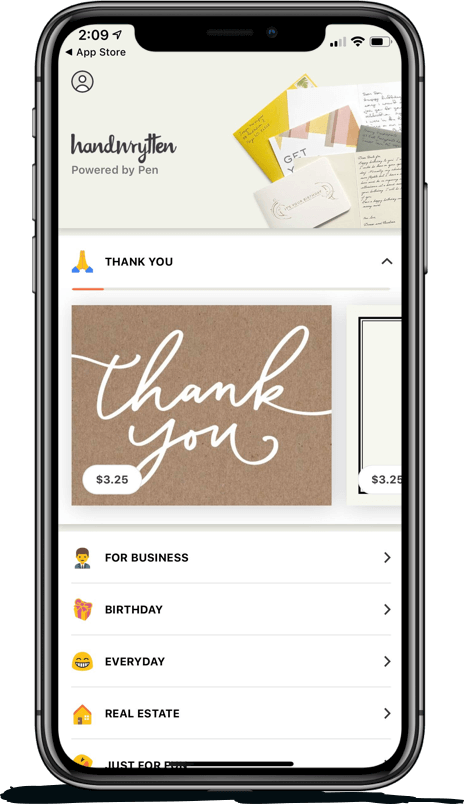
9280 S. Kyrene Rd.
Suite 134
Tempe, AZ 85284
Phone: +1 (888) 284-5197
Email: contact@handwrytten.com



You have been subscribed. Thank you!


Customer reviews provide the most critical insight into a company’s products and services. They are so valuable that customers rely on them to make purchasing decisions. Stats show:
These insights echo the need for businesses to ask for customer reviews. While it seems self-serving, it’s a win-win situation. Customers obtain valuable information about your products while the company gets to know what customers think about their products.
When asking customers to leave product reviews, you want to be tactful — don’t be too needy or forceful. Keep reading for tops on how to ask your customers for a product review.
Customer reviews help customers understand what others liked or disliked about your product or service. They also:
If your product has the most 5-star ratings, customers are more likely to purchase your products. The ratings provide social proof that builds the shopper’s confidence and motivates them to buy the product from you.
Asking for feedback proactively strengthens customer relationships and increases a company’s reach. This is because the most satisfied customers not only leave good feedback, but are also inclined to promote your product to their friends. We all know word-of-mouth remains the most effective marketing tool.
You’d be surprised to find that most of your customers are willing to review your product. They only need a little nudge or reminding. A 2019 survey conducted by BrightLocal found that 76% of customers who were asked to leave reviews did so. This was a 70% increase from the previous year.
A 2019 survey conducted by BrightLocal found that 76% of customers who were asked to leave reviews did so.
While rank on search engine results pages is a function of many factors, search engines like Google find reviews an essential metric for organic and local search rankings. The search engines examine factors like a product’s ratings, review count, and review text when ranking the product or its website.
What’s more, consumers often use search engines to look for reviews about a product before buying it- alluding to the importance of product reviews.
Customer reviews also provide valuable data for marketing campaigns. Unlike Facebook posts and tweets, product reviews have a longer shelf life. According to Moz, the lifespan of a tweet is 18 minutes, while Facebook posts get engagement for 30 minutes at most.
This is a relatively short time for customers to get adequate information about a product. Conversely, customer reviews as old as three months are still relevant. Stats show that 85% of customers believe that only reviews older than this period are no longer relevant. As such, a review posted two weeks ago is likely to carry more weight than a tweet posted two days ago.
All these reasons echo the need for businesses to prioritize asking for customer reviews.
Getting buyers to leave feedback might seem challenging, but the truth is it’s pretty simple. Today, there are so many channels a business can exploit to get customer feedback. The trick is to be tactful when asking for feedback and to avoid relying on one method. We look at ways to go about it:
Launching a review request email campaign is one of the most effective ways of getting customer reviews. Stats show 91% of customers open their emails daily, hence a surefire method of communicating your message to customers.
You can launch the campaign by creating customer surveys or writing emails to your customers with a link page where they can write a review. Request emails are tied to actual transactions that happened, lending authenticity to your reviews. What’s more, email requests help marketers evaluate a customer’s satisfaction level and identify those likely to recommend your business to others.
Here’s an example of how to ask for a product review via email:
Dear (Customer’s First Name),
As one of our valued customers, your feedback is of utmost importance to (the company’s name). We strive to provide the best experience to our customers, and your input helps us define that experience. Kindly take a minute or two to post a review of your experience with our products (leave a link).
We hope to see you soon!
Best Regards,
(Name/Company name)
This is a more direct method of asking for reviews from customers when making in-person sales. It’s an excellent way of capturing actionable reviews and honest customer insights a few minutes after purchasing products.
It’s also a valuable opportunity to strengthen customer relationships and get reviews in scenarios where you don’t have the customer’s contact information. You must be creative when using this technique because some customers might not welcome the idea of having somebody follow them up for feedback.
One way to do it is to set up a device for providing feedback at the point of sale. It can be a tablet or an iPad displaying a brief survey about their experience at the store. You want to avoid asking customers to log into their gadgets, too — the idea is to get them to write a review on the spot.
If the order is delivered to their home, you can consider creating written notes that come packaged with the product. These notes can come on quality stationery to give them a higher sense of importance and show that you care about their experience. You don’t even need to wrack your brain thinking of how to word your pitch for a review on these notes. It can be as simple as something like:
(Customer Name),
Thank you so much for your patronage with (company name). We value your experience with our product and would love to hear your feedback with it. If it wouldn’t be too much trouble, head over to (review platform of choice) to help us continue meeting our customers’ expectations.
Warm Regards,
(Name/Company name)
Although it may seem like an outdated form of communication, writing handwritten letters to your customers is a significant way to capture their attention and stand out from your competitors.
Services like Handwrytten allow you to send bulk letters to your customers. All you need to do is provide the client’s physical address and their robots do the rest!
If you’ve multiple businesses in different locations, it can be challenging to ask for feedback from all the customers. Review generation software comes in handy as they help companies to generate new reviews through customizable landing pages, SMS, email campaigns, and on-site kiosks.
The software increases the number of reviews businesses can collect manually and reduces the number of resources required significantly. If your sales team is using customer relationship management software, consider integrating the review generation tool. For example, you can automate sending review requests after closing a sales deal or solving a customer’s complaint.
Whether your business confirms purchases via email or thanks you page, asking for feedback immediately may be too soon. However, they can still share their overall buying experience, e.g., how it’s like to navigate your website, the purchase process, and their interaction with your staff. The best way to go about it is to include a thank you note in the customer’s order.
Here’s some examples:
Thank you for buying from (company name)! If you’re happy with the product, please provide a brief review here (leave a link to the review platform).
Thank you for buying from (company name)! If you loved your shopping experience, don’t hesitate to tell us about it.
Landing pages are no longer marketing or advertising channels; businesses can also use them to collect customer reviews. Landing pages designed for this use collect more reviews and generate more new reviews than other methods.
Such landing pages can be optimized for customer feedback using review generation software, embedded reviews widgets, and survey forms. After setting it up, identify the main touchpoints more likely to drive customers to the page.
This technique feels a little traditional but is still effective at getting customer reviews. You want to be direct, tactful, but also appreciative.
Here’s an example:
We’d love to hear from you: Hello (customer’s first name), we’d love to hear about your experience at (company name). Could you please take one minute to provide feedback on your visit to (company name link.) This link will direct you to a survey page with three questions. Thank You.
If your primary goal is to grow your brand’s presence in specific review sites, it’s best to consider using business reviews like Google reviews, Yelp, TripAdvisor, and more. Notably, Google has outpaced most business review sites as it provides businesses with a range of tools.
For example, you can create a Google review link you can share in email campaigns, social media profiles, customer feedback surveys, among other platforms. Alternatively, you can use Google review stickers. They allow businesses to create, download, and print customized marketing resources and convert reviews and additional business information into ready-to-use social media posts, posters, and more.
With so many ways to ask for customer feedback, you shouldn’t shy away from asking. This small effort helps build lasting relationships, attract new customers, rank higher on search engines, and more.


Scale your handwritten outreach, creating positive impressions and long lasting bond.
Sign Up Today!


Over 100 designs to choose from or design your own. Our online card customizer makes it simple.
Check Out Our Cards!





